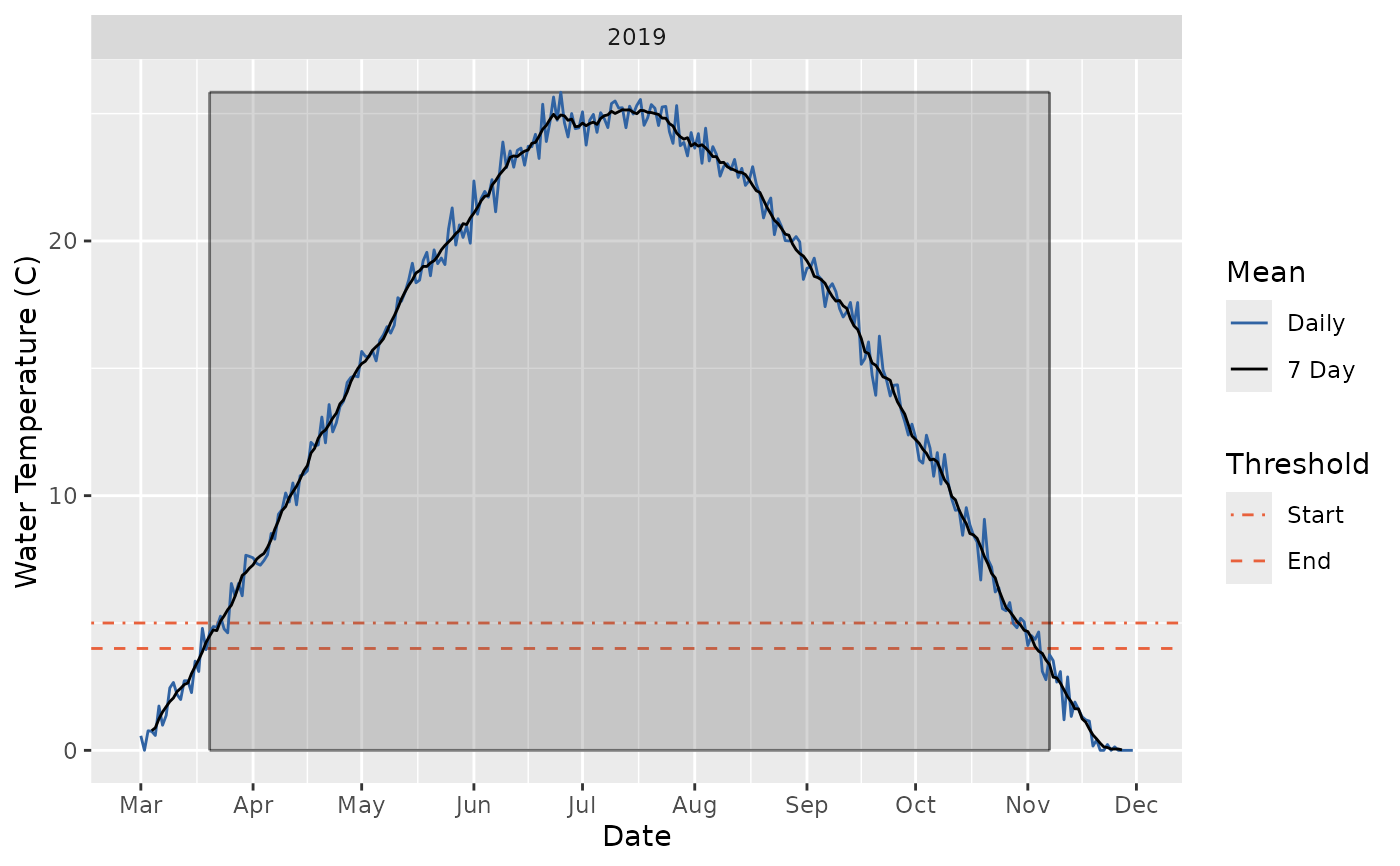A wrapper on gsdd::gss_plot() to by default
plot all Growing Seasons ignoring truncation.
For more information see gsdd::gss_plot().
Usage
gss_plot(
x,
min_length = 60,
ignore_truncation = TRUE,
pick = "all",
latex = FALSE,
nrow = NULL,
ncol = NULL,
msgs = TRUE
)Arguments
- x
A data frame with two columns
dateandtemperature.date, which must be of class Date provides the dates andtemperaturewhich must be a numeric vector provides the mean daily water temperature in degrees centigrade.- min_length
A whole number of the minimum length to consider. Must be at least twice the window width but no more than 365. If NULL then set to be the difference between
start_dateandend_date(ignoring the year).- ignore_truncation
A flag specifying whether to ignore truncation of the mean daily water temperature vector or a string of "start", "end", "none" (equivalent to FALSE) or "both" (equivalent to TRUE) specifying which type of truncation to ignore.
- pick
A string specifying whether to pick the "longest", "shortest", "first" or "last" 'season' or the season with the "biggest" or "smallest" GSDD. By default the returned value is the the GSDD value for the "longest" 'season'.
- latex
A flag specifying whether to use LaTeX to include degree symbol in y-axis label.
- nrow
A count of the number of rows to facet by.
- ncol
A count of the number of columns to facet by.
- msgs
A flag specifying whether to provide messages.
See also
gsdd::gss_plot() and gss().
Examples
gss_plot(gsdd::temperature_data)
